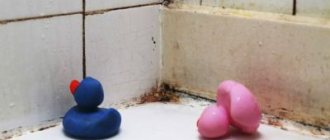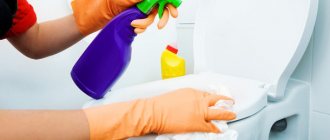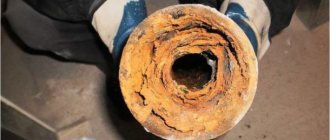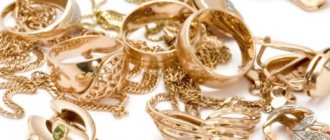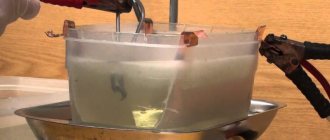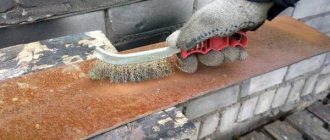Sometimes one look at a rusty tool is enough to decide to get rid of it. However, there is no need to rush, as there are many ways to combat corrosion at home.
Folk or store remedies or devices for mechanical cleaning come to the rescue.
Read the article to learn how to apply them correctly in practice, successfully remove rust from an instrument at home and restore its original appearance.
Folk remedies
You can quickly and safely deal with rust using available tools. The most unexpected and inexpensive compounds come to the rescue, including acetic acid, hydrogen peroxide and even carbonated drinks like Coca-Cola, but for these products to work, they must be used according to the instructions.
How to remove with acetic acid?
For cleaning, it is recommended to use an essence with a concentration of 70%.
Mode of application:
- Place the instrument that needs cleaning into a suitable container.
- Fill it completely with acetic acid.
- Cover the container with a lid and leave for several days. The more rust, the longer it will take.
- After cleaning, rinse the tool in a baking soda solution. It neutralizes acid.
After this treatment, you can continue to use the devices. The effectiveness of cleaning with essence is very high. It allows you to cope even with a thick layer of rust. If it is small, then you can use table vinegar or lemon juice.
It is not recommended to use vinegar to clean aluminum tools as it will dissolve the epoxy layer and damage the metal structure.
If rust has stuck to the tool in pieces, then the areas can be cleaned with ordinary food foil. It is used as a scraper.
Citric acid and hydrogen peroxide
You can get rid of rust using citric acid and pharmacy hydrogen peroxide. To prepare the solution you will need:
- citric acid – 20 g;
- peroxide – 15 ml;
- water – 100 ml.
Instructions for use:
- All components are mixed with each other.
- Place the instrument in a suitable container and fill it with solution.
- Leave them for a day under a closed lid.
- After the specified time, the solution is drained. The instrument is washed with clean water, dried and used for its intended purpose.
During the cleaning process, the solution will become dark in color. This is normal and indicates the effectiveness of the composition. With its help you can cope with a small layer of rust.
If the instrument is severely damaged, the concentration of the solution must be increased. In advanced cases, they refuse to add water altogether, dissolving citric acid in peroxide .
The video will tell you how to remove rust using citric acid and peroxide:
How to remove Coca-Cola?
Coca-Cola is a popular carbonated drink that can be used to remove rust. The effect is achieved due to the content of orthophosphoric acid, which corrodes oxides.
Mode of application:
- pour Coca-Cola into a suitable container;
- place rusted objects in it;
- cover the container with a lid;
- leave for a day.
The next day, the part is removed, rinsed with clean water and dried.
Coca-Cola is one of the budget and effective rust removers. Sprite and Fanta have a similar effect.
Soda
You can deal with rust using baking soda. An alkaline solution will help get rid of a small layer of corrosion without harming the metal. The effectiveness of the method is explained by the active action of sodium.
Mode of application:
Prepare the required amount of soda slurry by mixing the powder with water. It should be moderately thick, reminiscent of a paste in consistency.- Using a sponge, apply the paste to the instrument.
- Leave the mixture to act for an hour.
- Rinse the product and wipe it with a dry soft cloth.
- If necessary, the procedure can be repeated.
Baking soda is not a highly effective way to combat rust, but a small layer can be removed this way.
Zinc chloride
You can use zinc chloride to remove rust. Apply it as follows:
- 20 g of zinc chloride are dissolved in 200 ml of water, the product is prepared in the quantity required;
- pour the solution into a suitable container, lower the tool into it;
- leave to act for an hour;
- Rinse the instrument with clean water and wipe with a dry cloth.
Zinc chloride contains free hydrochloric acid, which has the ability to dissolve rust. The main thing is not to overexpose the composition so that the metal itself does not turn black.
The method is quite effective; zinc chloride can cope with even large areas of corrosion.
How to restore rusty old tools (three ways)
Salvaging old tools will require patience, durable abrasives, and good eyesight.
The forgotten instrument has a strange power of attraction. He beckons, attracts. Take it in your hands, and the next thing you'll do is scrape off a layer of rust with your thumbnail, trying to make out the name of the manufacturer of this tool.
You vaguely remember how it came into your hands: either it was taken at a sale, or your father-in-law gave it to you, or maybe a compassionate neighbor left it as a souvenir during the move, just so as not to throw it away...
“Everyone has these little lost gems,” a friend of mine, an excellent carpenter with a penchant for collecting miscellaneous tools, once said, looking thoughtfully at a rusty hammer lying in the corner of my balcony. Planes, chisels, chisels, hammers, pliers and a whole heap of rare and strange devices for working with materials of different hardness from different countries and eras decorated his workshop.
See also: 5 inexpensive tools for auto mechanics that you can’t do without
But here’s what’s interesting: all these production tools were in perfect condition, there wasn’t even any rust on them, and sharpening, if provided, was like a new tool. They waited their turn to work, their oiled sides shining, each in his place. It always surprised me. How does he keep such old instruments in such great order...? I decided to find out his secret.
“It’s quite easy to restore them,” said a friend, “but, unfortunately, I’m leaving early tomorrow morning on a business trip, so I won’t have time to tell you all the details. You better read about this somewhere on the Internet. You’ll find a lot of good ways there.”
And indeed, I found it. I will provide excerpts from one such article in this material. In my opinion, it will be a good instruction on the practical restoration of old instruments that have long been abandoned to the mercy of fate.
“We took a bunch of old instruments with us and went into the studio (a former church in North Salem, New York) to clean them up. We realized that all it takes is some basic chemistry and a little effort to salvage tools that look like they've been sitting on the ocean floor for centuries,” began an article on restoring old rusty junk. But is it really trash?
The round head of this figured hammer (in the title photo) looked deader than dead. But as soon as we removed the rust from the metal, polished the rusty steel to a shine, applied a thin layer of machine oil to the metal and added a new handle to the hammer, life returned completely to this delicate instrument for elegant work.
Specialized compounds
If available products cannot cope with rust, you can use store-bought compounds. The following removers work well to remove corrosion:
Neomid 570 .
The concentrated composition contains a complexing agent, a solvent and a corrosion inhibitor. The composition is applied to the problem area with a synthetic sponge and left for half an hour. After the reaction is completed, the remaining product is removed with water. The cost of 1 liter of solution is 580 rubles.- Rust Remover Prosept 023-05 . The composition is applied to the surface using a spray bottle, which is equipped with a bottle. Leave the product for 20 minutes to take effect, after which it is washed off with water or removed with a damp sponge. The cost of a solution with a volume of 0.5 liters is 250 rubles.
- G-Power Zinc Remover . Apply the product to the cleaned surface, wait until it dries completely and thoroughly clean the tool with a soft brush. The cost of a solution with a volume of 0.75 l is 200 rubles.
You can purchase the compounds in hardware stores and in stores for car enthusiasts, as well as on the Internet.
Mechanical cleaning to restore original appearance
You can get rid of rust on tools mechanically. For this use:
- Hand brushes with metal bristles. They differ in the stiffness of the bristles and the way they are attached to the handle.
- Mechanical brushes with pneumatic drive. This method may seem easy to use at first glance, but working with automatic brushes is quite difficult, since you have to process small parts. During the procedure, a lot of fine metal dust is generated indoors, so the respiratory system must be protected with a respirator.
- Aluminum foil soaked in vinegar or other acid.
- Sandblasting machines. With their help, you can clean the tool in a few seconds. Moreover, the thickness of the corrosion does not matter.
Regardless of the selected device, the procedure does not change. General instructions for using the tools:
- Before cleaning, the tool must be securely fixed - the optimal setting for this purpose is a vice;
- The surface should be rubbed evenly, controlling the pressing force;
- movements should be circular;
- The stiffer the brush, the less time the procedure takes.
When working with any tool, your hands should be protected with gloves, and your face and eyes with a mask.
Features of removing corrosion from various objects
Removing rust from various objects has certain features that must be dealt with in advance.
From the body of a car
Motorists often have to remove traces of corrosion from the body of their vehicle. To do this, use the following anti-corrosion compounds:
- Orthophosphoric acid. A solution of orthophosphoric acid will help remove rust from iron. It is applied to the surface of the sponge that will be used to wipe the car body.
- Zinc. Mixtures prepared from zinc remove corrosive plaque after the first treatment.
Water tap
You must clean the faucet in the kitchen or bathroom very carefully so as not to accidentally damage its coating. You can wash a metal enameled surface with the preparation “Adrilan”, which is produced for washing household appliances. Before use, it is mixed with warm water to make the composition less concentrated.
Read also: Reversible motor wiring diagram
Bicycle
If you don't take care of your bike, sooner or later rusty spots will appear on its frame. When cleaning a bicycle from corrosion traces, use citric acid. To remove rust, perform the following sequence of actions:
- degreasing the surface and sanding it;
- surface coating with acid;
- washing the treated area.
Konkov
When skates are stored for a long time in conditions of high humidity, a rusty coating forms on them. Experts recommend eliminating it with folk remedies. A mixture made from baking soda and lemon juice is considered effective. To prepare the cleanser, mix lemon juice with baking soda until a paste-like mixture is obtained. It is rubbed into the rusty surface and washed off with water after an hour and a half.
Horseshoes
An old rusty horseshoe can be cleaned with oxalic acid. To create a working solution, you need to mix a kilogram of acid with 12-14 liters of boiled water. Then the liquid is poured into a separate bucket, after which a horseshoe is lowered into it for forty minutes.
Oxalic acid emits dangerous fumes and therefore wear a protective mask when handling it.
Instrument
Files and other metal tools that are rarely used will rust over time. You can clean working tools from corrosive deposits with a vinegar solution. Vinegar is mixed with water in a one to one ratio, after which the prepared solution is poured onto the tools. Then they are scrubbed with a wire brush and washed.
Nuts
Cleaning nuts from rusty deposits is quite simple. To do this, pour 100 milliliters of vinegar into a bucket of water. Then add all the rusty nuts that need to be cleaned. They are soaked for at least 3-4 hours, after which they are washed with water and wiped off any remaining rust stains.
Cleaning small household items
Keys and other small household items may develop small rusty spots. You can get rid of them using both chemical and mechanical methods.
Helpful information
To ensure that the process of removing rust from tools is as effective and safe as possible, you must adhere to the following recommendations:
- You need to be careful when working with acids and caustic compounds. Hands must be protected with gloves and care should be taken not to get the product in the eyes or on exposed skin.
- To soak tools, you need to use plastic basins or buckets. Metal products are not suitable for this purpose.
- The rust removal solution does not need to be poured out. If there are other contaminated instruments in the house, it can be reused by straining through cheesecloth. This does not reduce the effectiveness of acidic compounds.
- Before using any solvent, loose rust must be removed mechanically.
- Chemical reagents should be used in a well-ventilated area, away from heat sources.
Special anti-corrosion agents
There are several special products that are produced to combat corrosive plaque.
Solvents
To remove rust from metal coatings, use Schnell-Rostloser. This cleaner has good qualities that allow you to get rid of traces of oxidation. You can also treat the iron product with Spirit-1 solvent. Its advantages include:
- displacement of moisture particles from iron;
- formation of a protective layer on the treated coating;
- cheapness.
Converters
Converters are means that convert corrosion particles into a durable film. Such compositions are available in the form of solutions, emulsions and suspensions.
Experts recommend using converters not only to remove rust stains, but also to protect the product from further corrosion.
